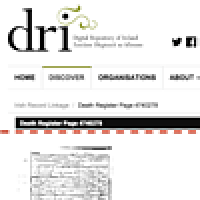A semantic architecture for preserving and interpreting the information contained in Irish historical vital records

Irish Record Linkage 1864–1913 is a multi-disciplinary project that started in 2014 aiming to create a platform for analyzing events captured in historical birth, marriage, and death records by applying semantic technologies for annotating, storing, and inferring information from the data contained in those records. This enables researchers to, among other things, investigate to what extent maternal and infant mortality rates were underreported. We report on the semantic architecture, provide motivation for the adoption of RDF and Linked Data principles, and elaborate on the ontology construction process that was influenced by both the requirements of the digital archivists and historians. Concerns of digital archivists include the preservation of the archival record and following best practices in preservation, cataloguing, and data protection. The historians in this project wish to discover certain patterns in those vital records. An important aspect of the semantic architecture is the clear separation of concerns that reflects those distinct requirements—the transcription and archival authenticity of the register pages and the interpretation of the transcribed data—that led to the creation of two distinct ontologies and knowledge bases. The advantage of this clear separation is the transcription of register pages resulted in a reusable data set fit for other research purposes. These transcriptions were enriched with metadata according to best practices in archiving for ingestion in suitable long-term digital preservation platforms.
Publication Reference
Debruyne, C., Beyan, O. D., Grant, R., Collins, S., Decker, S., Harrower, N.: A semantic architecture for preserving and interpreting the information contained in Irish historical vital records. Int J Digit Libr: 1-16 (2016) doi:10.1007/s00799-016-0180-8


